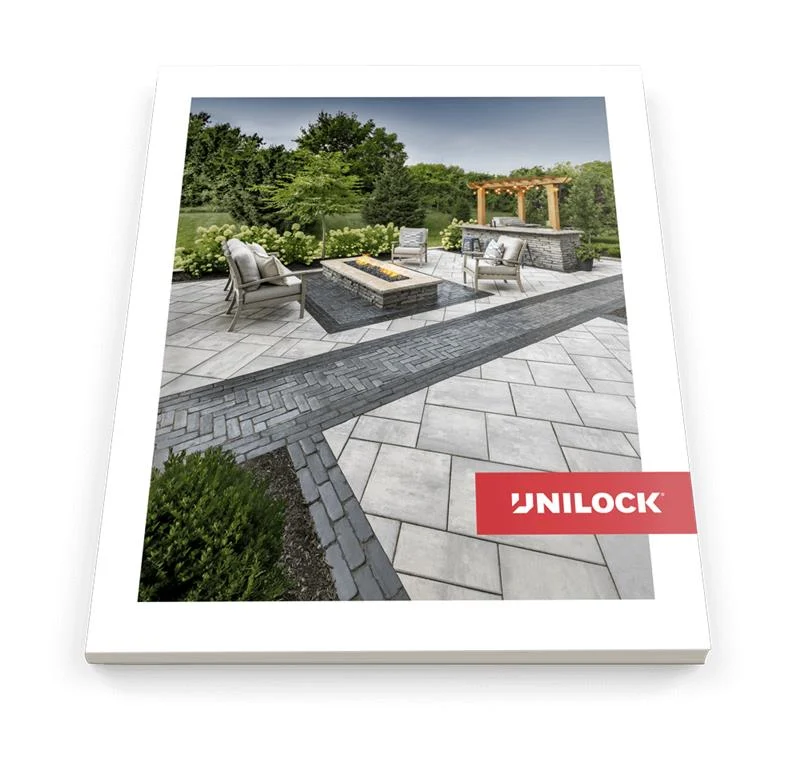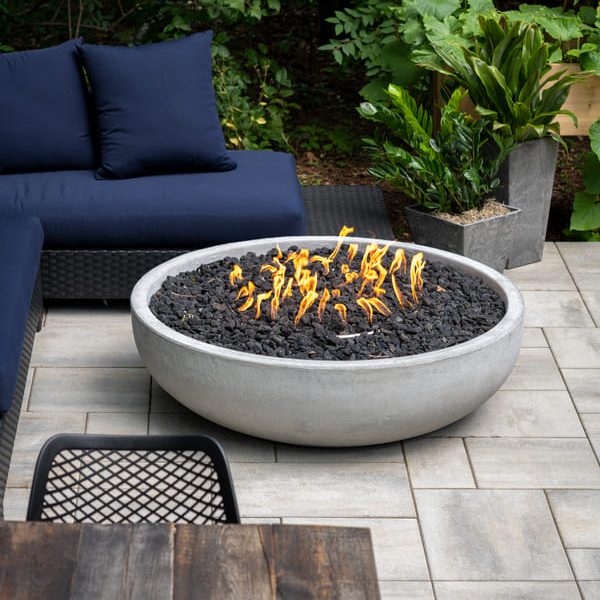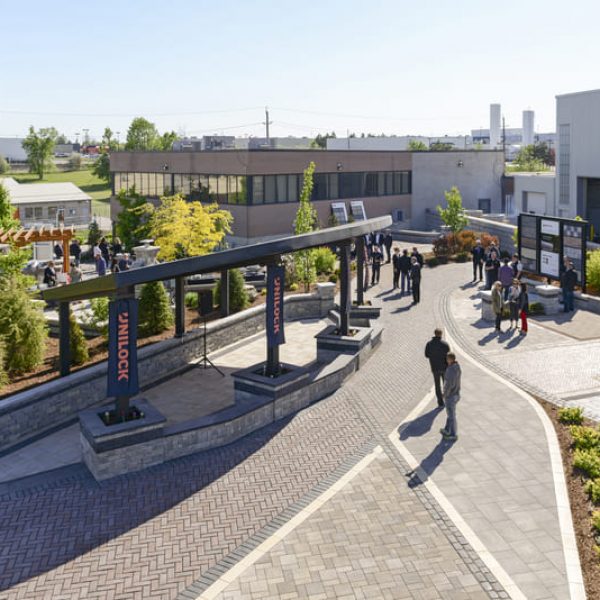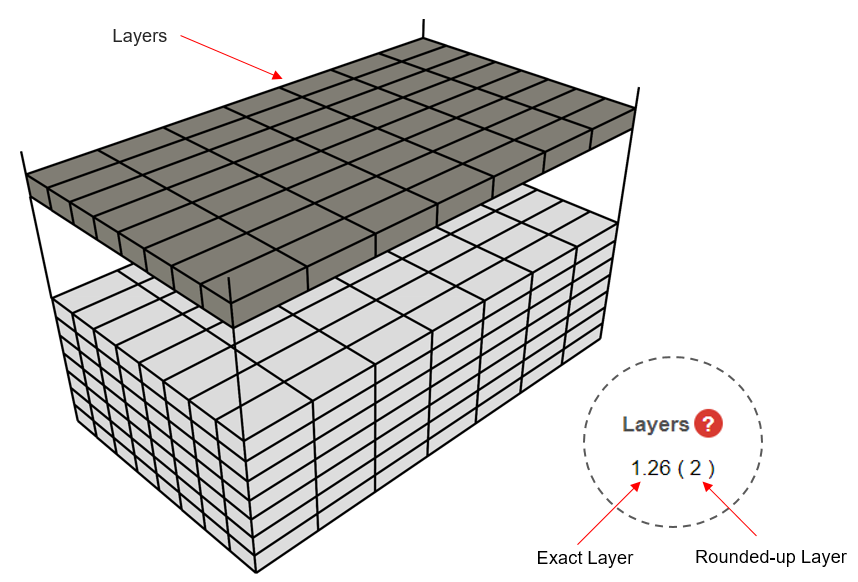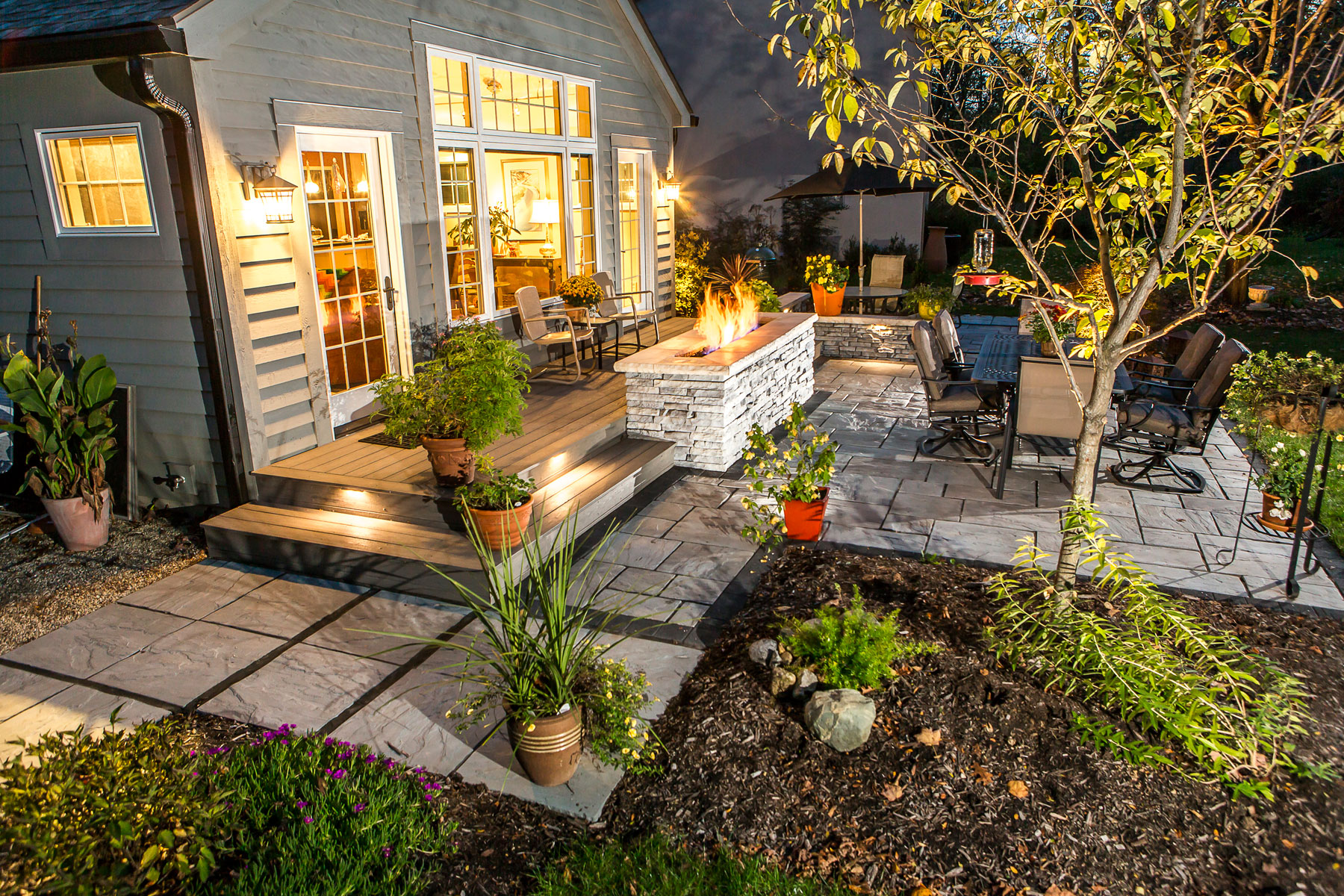
Landscape lighting is one of the single most important aspects of design contributing greatly to the night time ambience of your outdoor spaces. Lighting can be used to alter the mood of a space, liven the atmosphere, and create a huge variety of visual effects. In this article we’ll look at some of the ways you can improve your outdoor spaces with the strategic use of lighting for your patios, walkways, and retaining walls.

Uplighting
Focused and direct lighting can be used to highlight certain features in order to contribute to your nighttime visual landscape. Trees, water features and lawn sculpture can take on an entirely new character when lit up at night. The drama of upward facing lights—or uplighting— striking the intricacies of tree limbs from beneath, for example, can create a magical, surreal ambience in your backyard. Another effective use for uplighting is the highlighting of the home itself. In the context of a backyard patio, an illuminated accent wall turns the architecture into an artwork and makes for an impressive central feature.

Walkway or Path Lighting
From a practical perspective, proper lighting for your home’s walkways is extremely important in order to provide sure footing and easy property navigation. Visually, in the same way that uplighting can be used to highlight accent walls, walkway or path lighting makes an attractive nighttime feature of your beautiful walkways. The lighting highlights the textures and colors your concrete pavers or natural stone, as well as the shape and style of the path itself. Walkway lighting is typically downward facing so as to prevent glare and discomfort to pedestrians, as well as to reduce light scattering.

Retaining Wall Lighting
Like walkway lighting, retaining wall lighting is often downward facing to avoid creating unnecessary light glare. One visual function of retaining wall lighting is to create dimension, by highlighting the height, angles and layout of your retaining walls. This can create some interesting visual effects, and once again, turn your retaining walls or the objects of your retaining wall lighting into attractive accent pieces. Retaining wall lighting can sometimes highlight unexpected features, such as shrubs growing along the edges of the walls, flowerbeds or other decorative arrangements. A popular choice for retaining wall lighting is a type of fixture that sits underneath the capstone of the wall, shining down on the rest of the concrete or natural stone retaining wall.
Experience the difference working with a Unilock Authorized Contractor can make for your project!
Creating Silhouette
For the introduction of drama with your outdoor lighting, try backlighting features in order to create a silhouette. While spotlighting highlights features and accentuates the subtleties of their texture, backlighting creates a display piece of a feature’s outline. This can be done with trees, shrubs or sculpture and creates interesting shadows that also contribute to your backyard nighttime aesthetic. While spot lighting is a common method of creating silhouette, silhouettes can also be created by strategically placing features where their outline will be exposed by other kinds of multifunctional lighting.
Decorative Lighting
Decorative lighting includes features such as paper lanterns, string lighting, and decorative lamps. Decorative lighting is what gives sparkle to a setting. Although decorative lighting does not contribute very much to the actual light level of a space, it does create points of visual interest and can be used focus the attention. Decorative lighting is often of a high intensity, low brightness, as in the case of LED fairy lights. These can be woven into trees, strung from your pergola, or wound around supporting pillars for effect.
For even more tips on bringing the style of your new patio space to the next level, check out this related read!
Ambient Lighting
Also known as general lighting, ambient lighting is the soft glow that fills a space. This can come from a single source, but more often is the cumulative effect of several sources so that no glare is created. Ideally, the ambient lighting of your patio design should be gentle and conducive to a relaxed social environment. Installing dimmers on your patio’s general lighting is a good idea. Outdoor fireplaces are also a good source of warm and gentle ambient light, but often require some help from other sources.
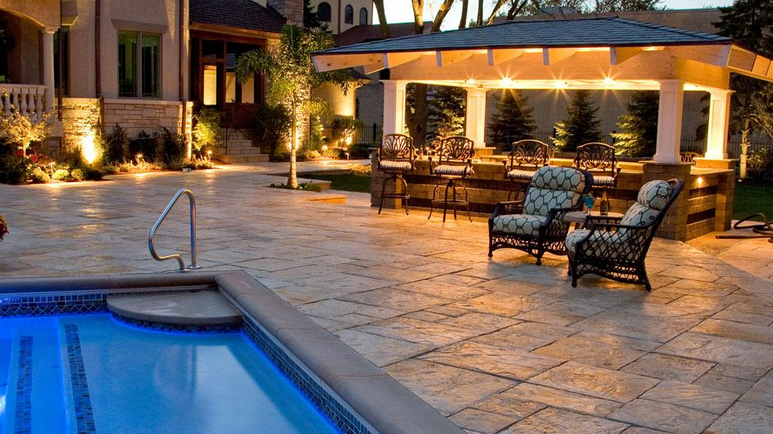
Colored Lighting
Colored lighting is an interesting dimension of lighting to play around with to influence the mood of your outdoor setting. Colored lighting can come across as garish if not treated with finesse, but can also be used to create enchanting scenes and sleek, modern environments. Pool lighting, for example, is often blue to enhance the serenity of the setting. Cycling colored lighting can also be introduced to your spotlighting to add a level of dynamism to your accents.
